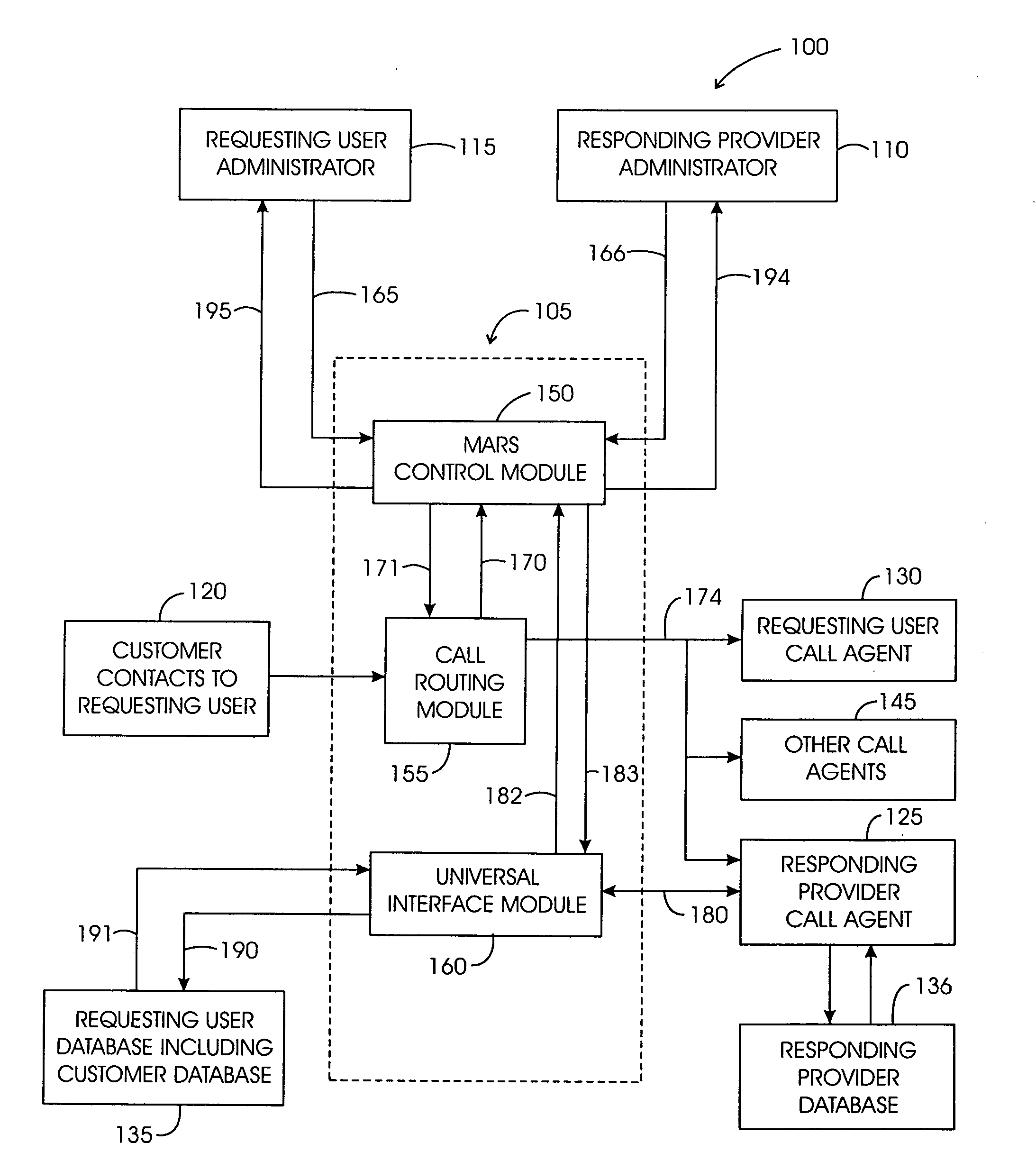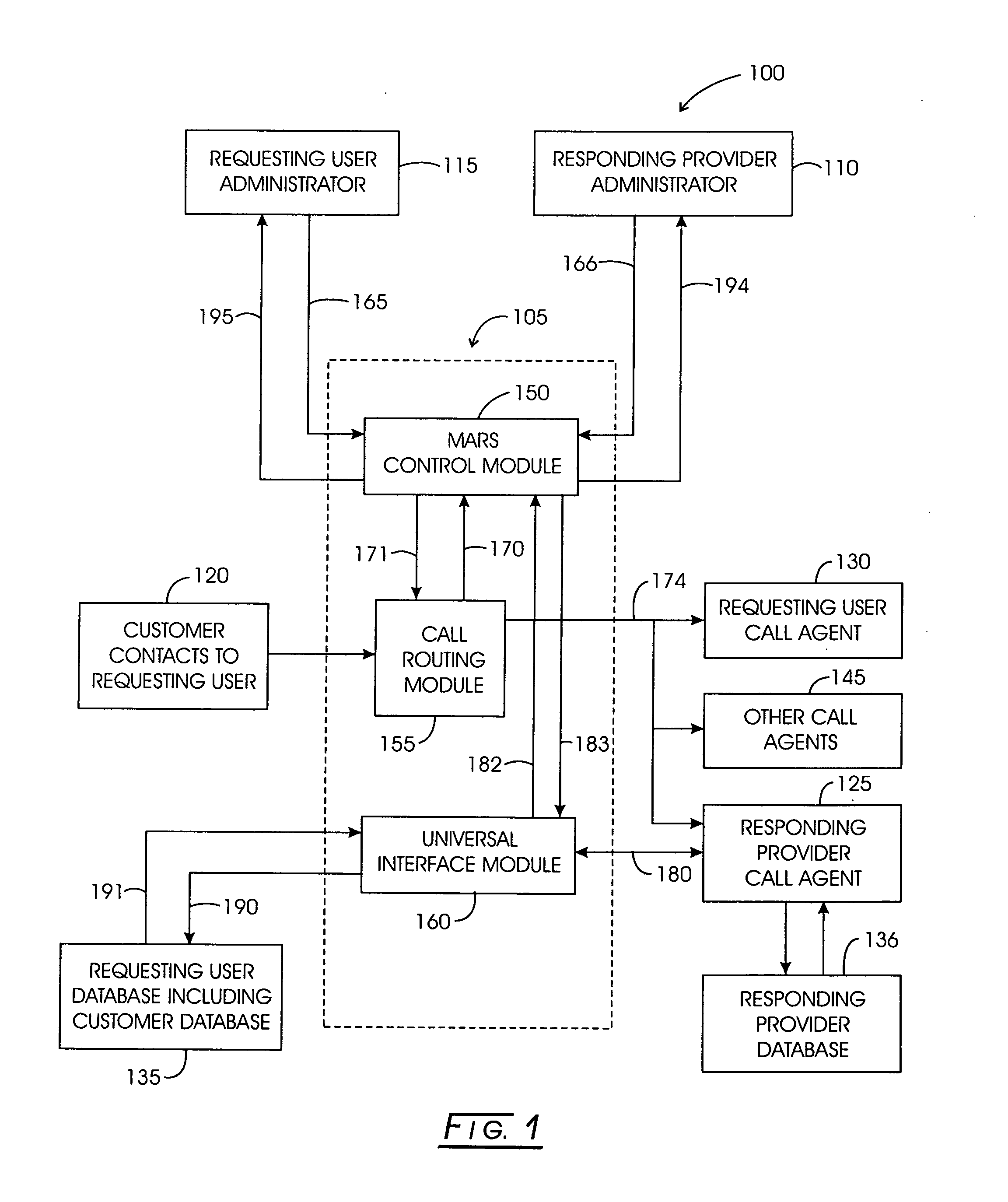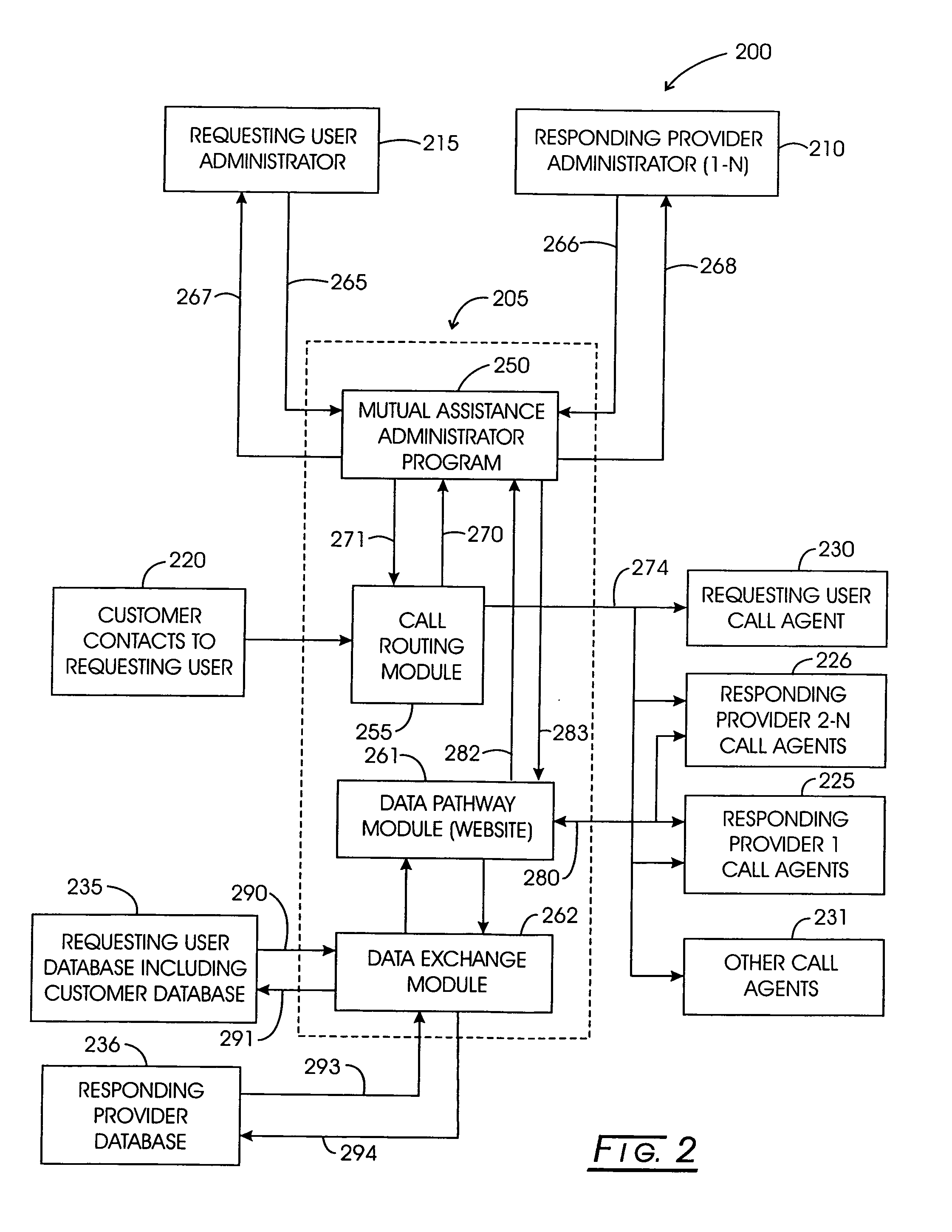Mutual Assistance Routing System for Improved Utilization of Customer Service Resources
a customer service and routing system technology, applied in automatic exchanges, instruments, electrical appliances, etc., can solve the problems of low effective level, high volume of requests for customer service agents, and inability to meet the needs of customers,
- Summary
- Abstract
- Description
- Claims
- Application Information
AI Technical Summary
Benefits of technology
Problems solved by technology
Method used
Image
Examples
example 1
Administrative and Customer Service Agent Screens for a Web Based MARS System
[0081]Implementation of a MARS system as described in a preferred embodiment is through a system utilizing an internet, i.e. web based, interface. FIG. 5 A-H shows examples of such user interface screens. Such screens may be enabled utilizing a hypertext protocol (http), through a dedicated terminal system, such as a VT-100 emulator, or other local or networked software hardware combinations as are used in the telecommunications and computing industries. FIG. 5A shows an administrator login interface 1100 that would allow an administrator for a requesting user or responding provider to log into the MARS system and enter control parameters for sharing customer service contacts. A screen title is shown at 1110, while address interface panel, generally at 1120, allows for listing the http internet protocol (IP) address to which the system is directed, or entry of alternative IP addresses. As described earlier,...
example 2
Call Routing System for Sample Municipal Utility
[0098]Some of the most important users of the MARS system are electric utilities. There are more than 80 major electric utilities in the United States. Because of requirements for efficient the operation of the electric power grid, electric utilities are exposed to substantial risk of service disruption resulting from natural disasters, such as hurricane, tornado, thunderstorms and ice storms, for instance. In times of natural disaster these electric utilities make use of mutual assistance agreements to restore electric service as quickly as possible. Utility crews are dispatched to remote locations to assist local utility crews in restoring electric service. As a result of these long standing mutual assistance agreements, electric utilities are amenable to agreeing to share customer service resources on the occasion of substantial service disruption. It is apparent, however, that sharing of resources may be useful on other occasions w...
example 3
Call Data Recording and Metering System
[0107]FIGS. 7A,B shows an example of a call data record summary from a hypothetical call routing through the system. In FIG. 7A, is shown the data structure 1000 for a CDR created for a hypothetical utility, providing a limited number of parameters useful for reviewing and metering call traffic. When filled with data, the different fields will be populated with data from actual calls. An abbreviated report such as produced from report form 1000, will typically quantify the numbers of events associated with the MARS activation. Field 1010 is a CDR title panel, while field 1020 is generally a number of different fields, selectable at the option of one or more administrators. Field 1040 is useful as an announcement panel to note features of the report presented. Field 1022 is a header row field, identifying the columns in the report, with column 1024 listing an abbreviated field name, field 1026 either listing data itself, of as shown here formatt...
PUM
 Login to View More
Login to View More Abstract
Description
Claims
Application Information
 Login to View More
Login to View More - R&D
- Intellectual Property
- Life Sciences
- Materials
- Tech Scout
- Unparalleled Data Quality
- Higher Quality Content
- 60% Fewer Hallucinations
Browse by: Latest US Patents, China's latest patents, Technical Efficacy Thesaurus, Application Domain, Technology Topic, Popular Technical Reports.
© 2025 PatSnap. All rights reserved.Legal|Privacy policy|Modern Slavery Act Transparency Statement|Sitemap|About US| Contact US: help@patsnap.com



